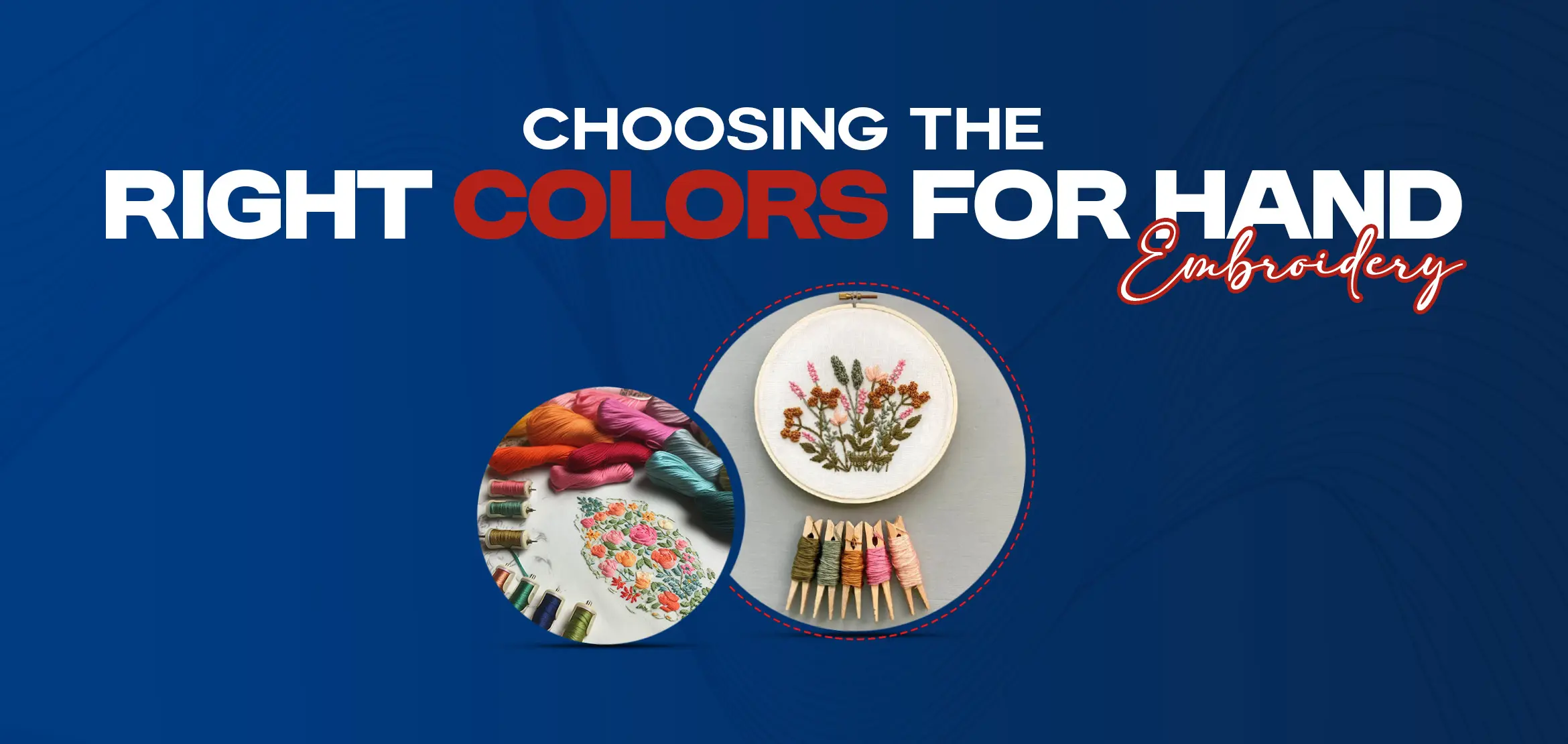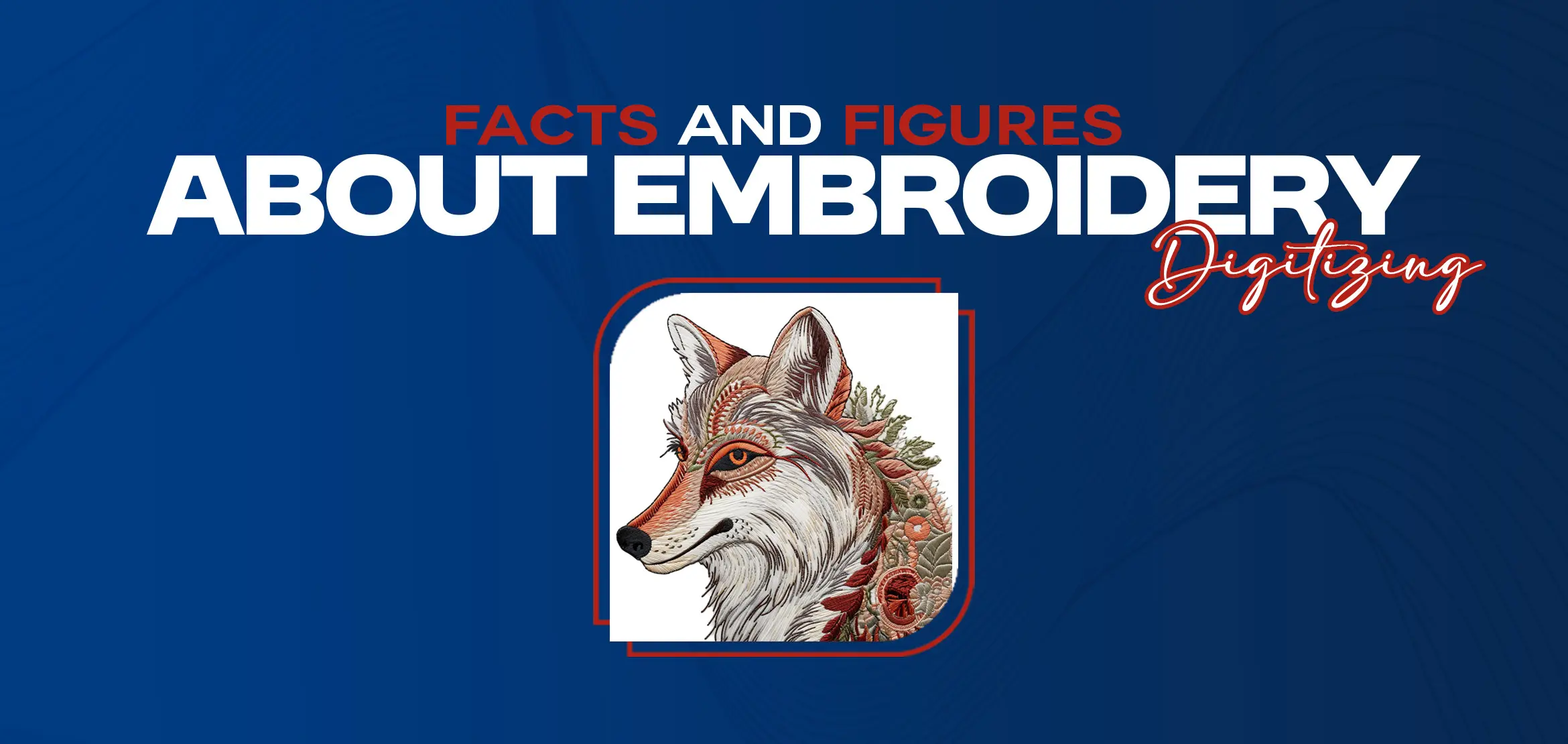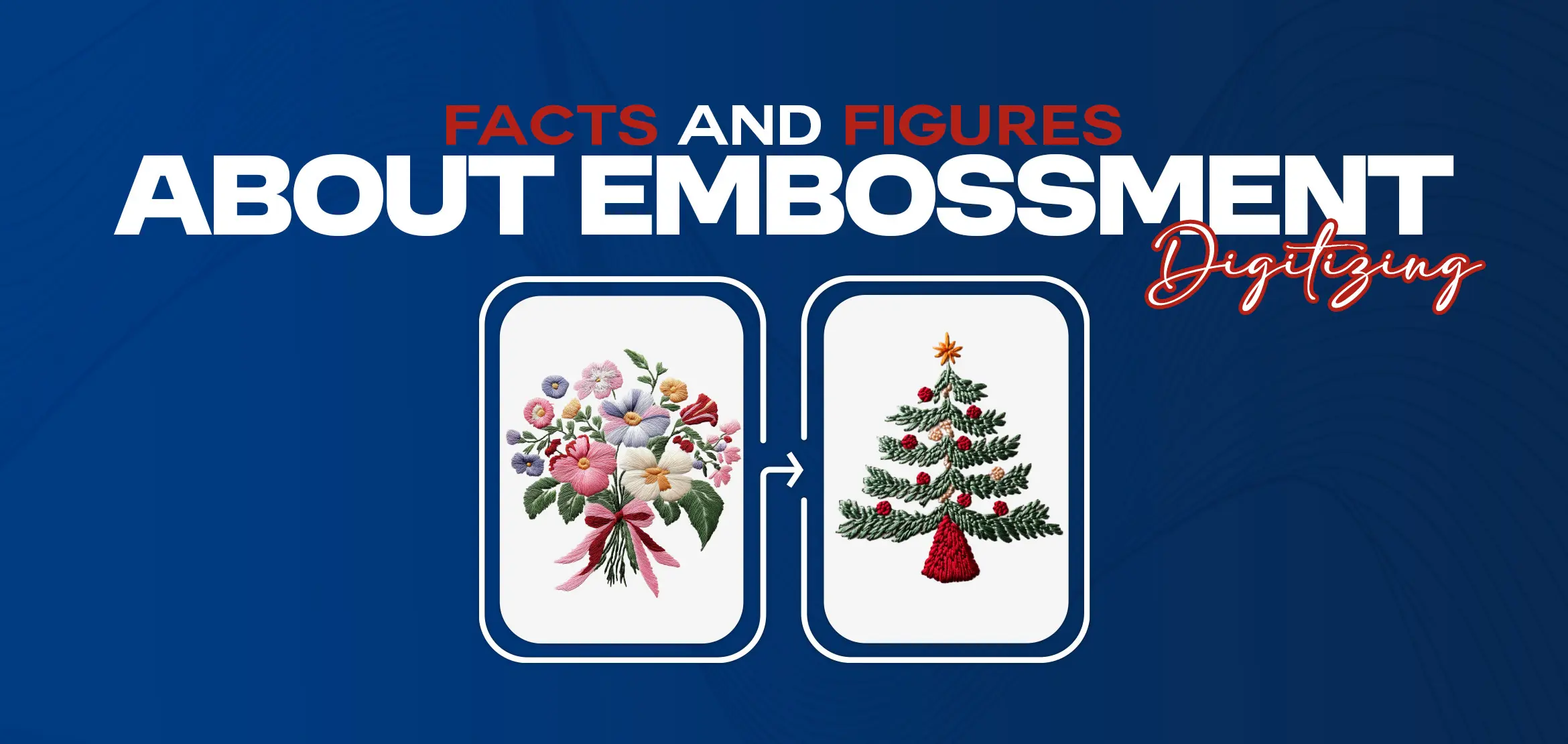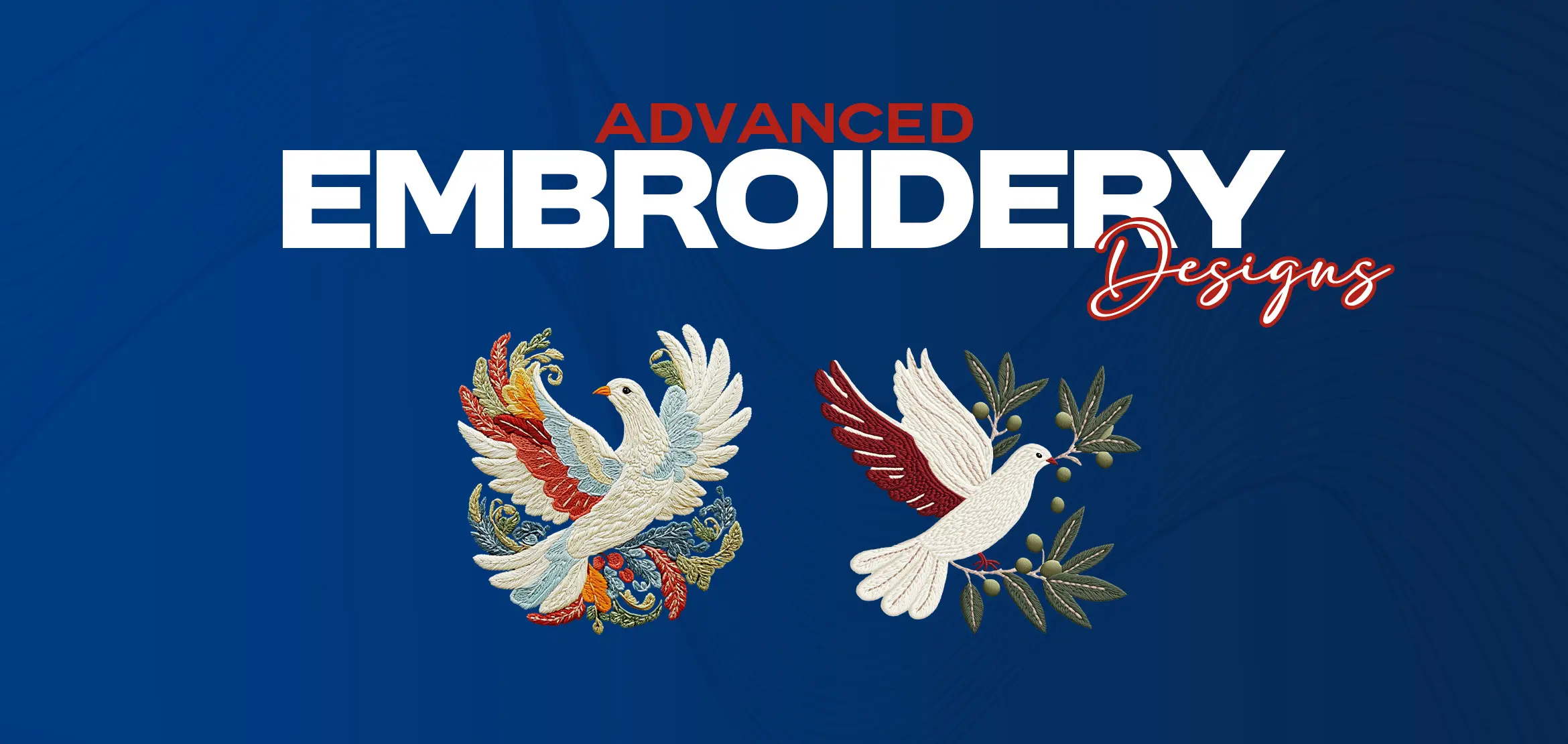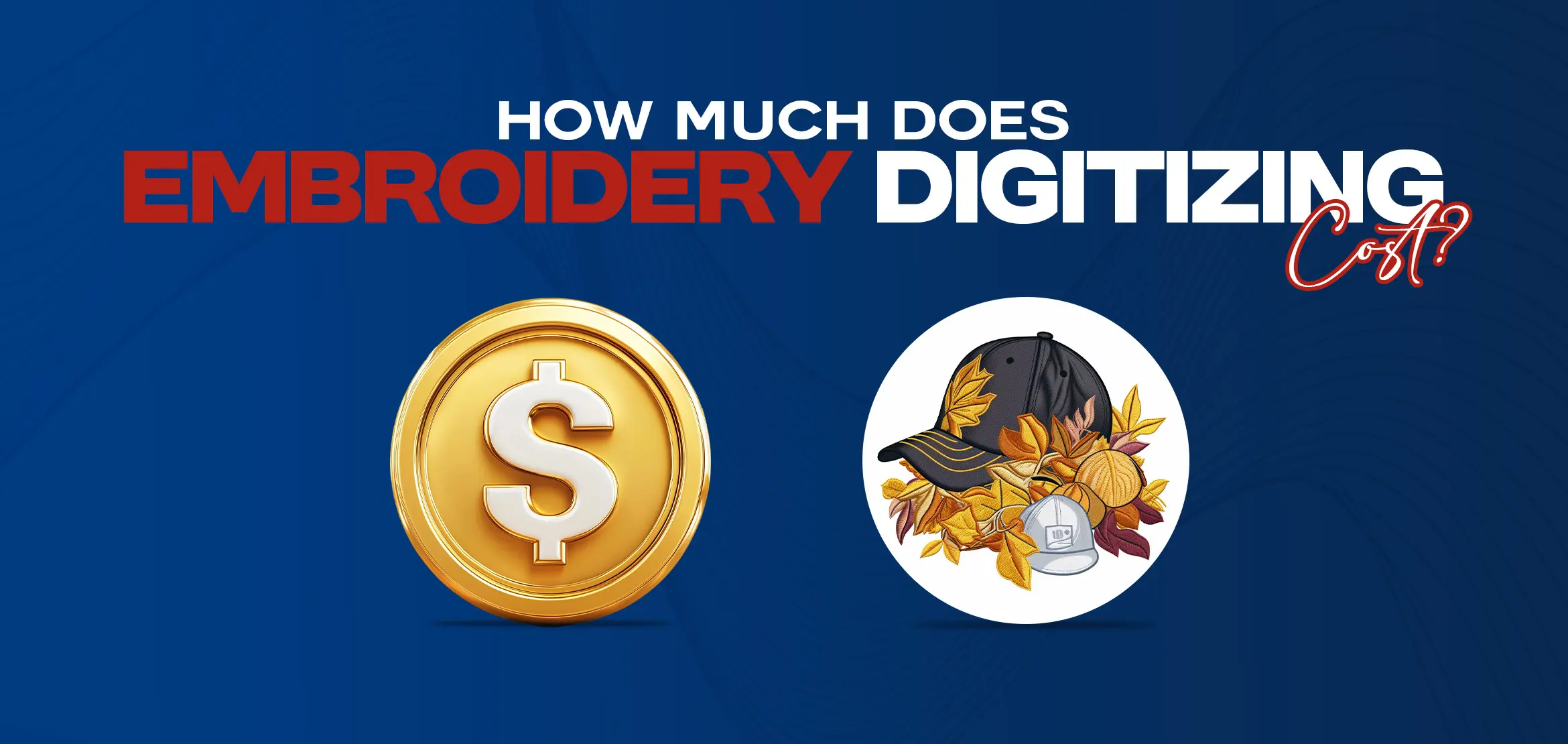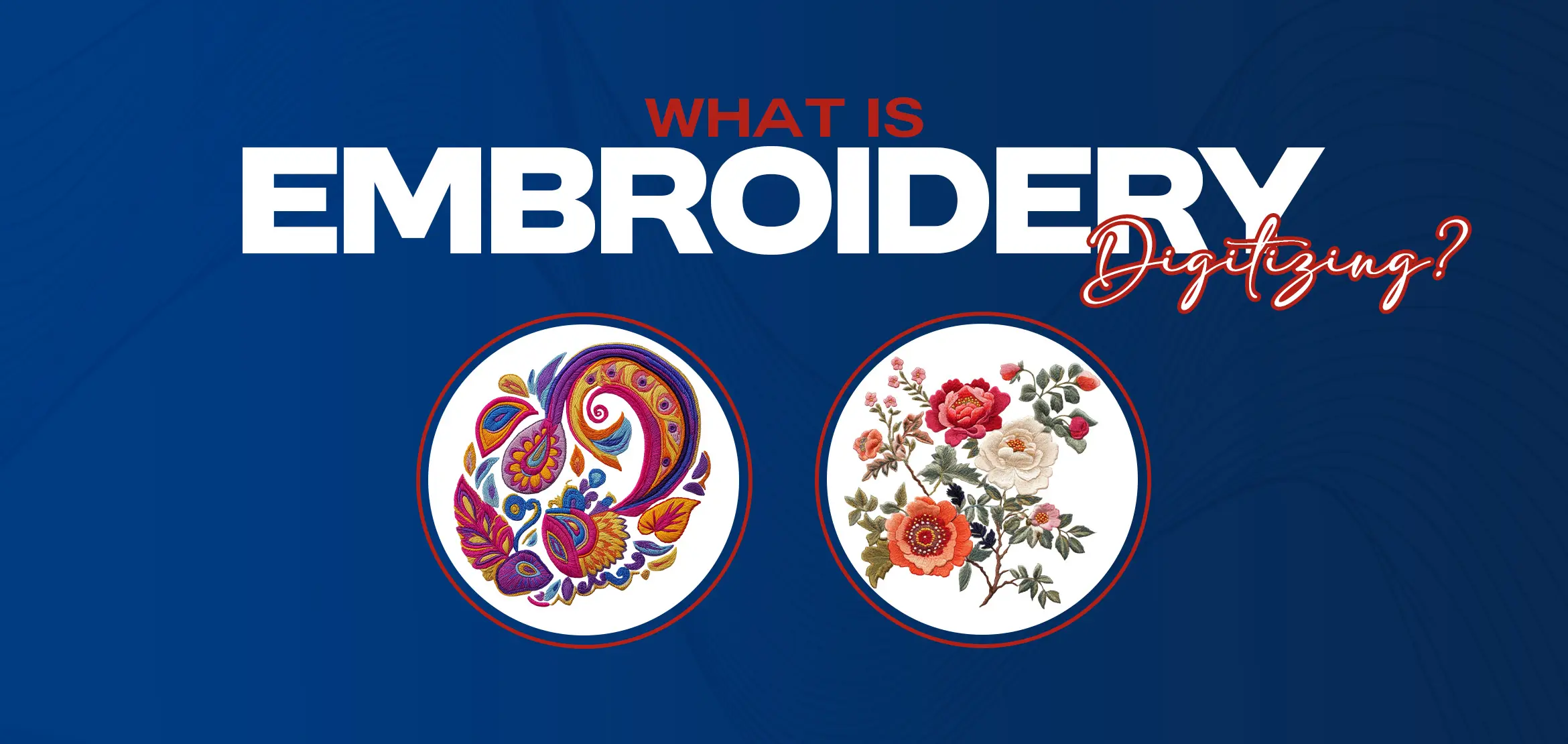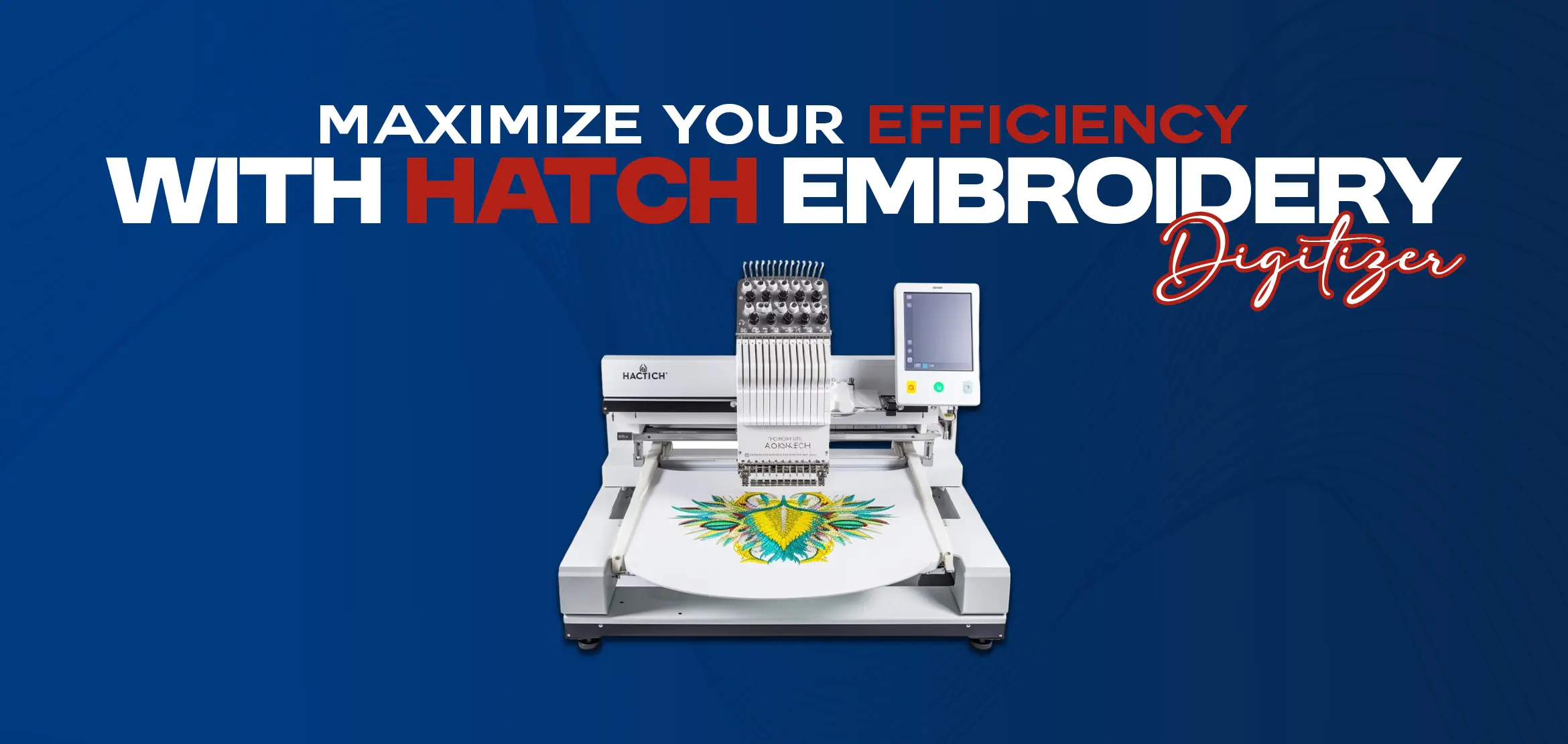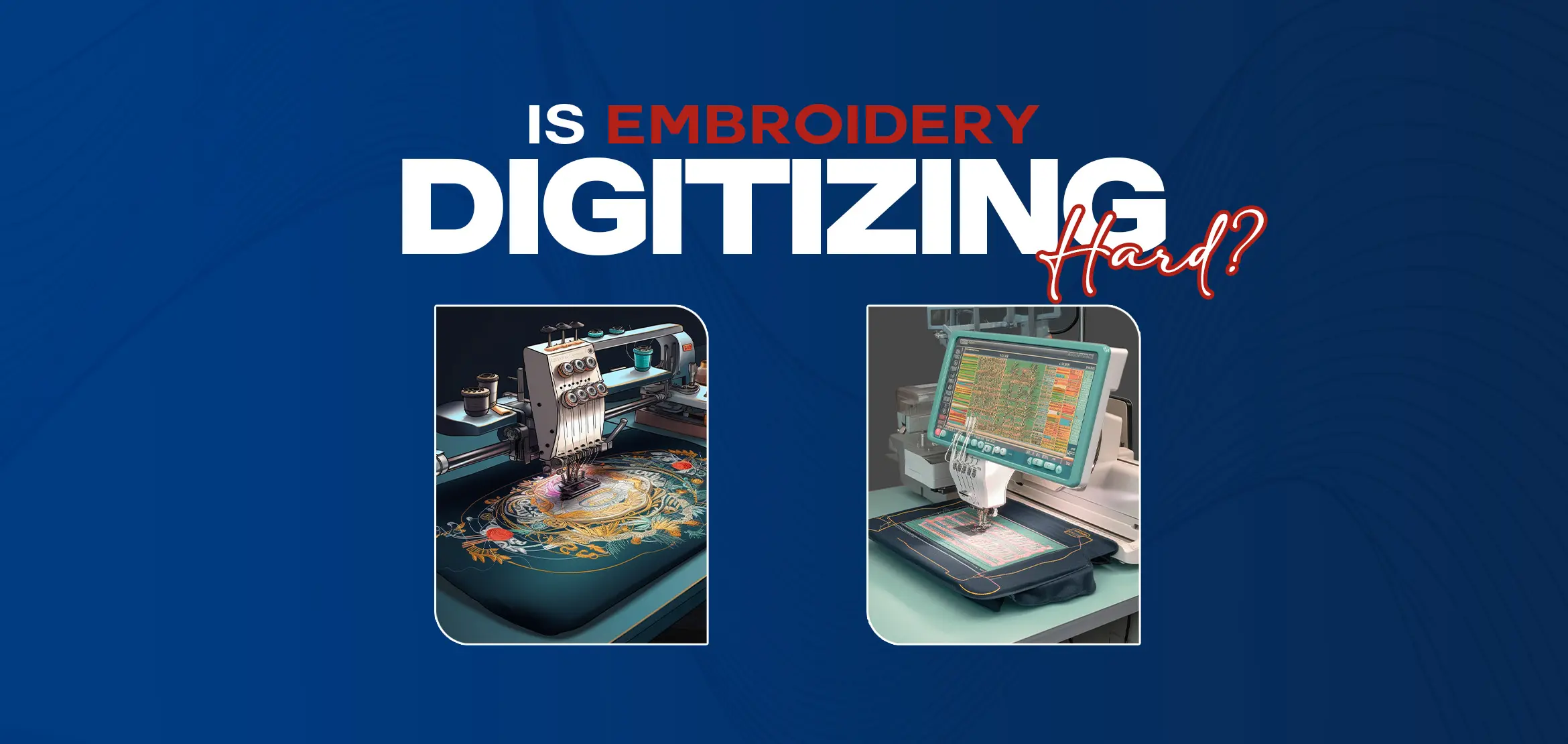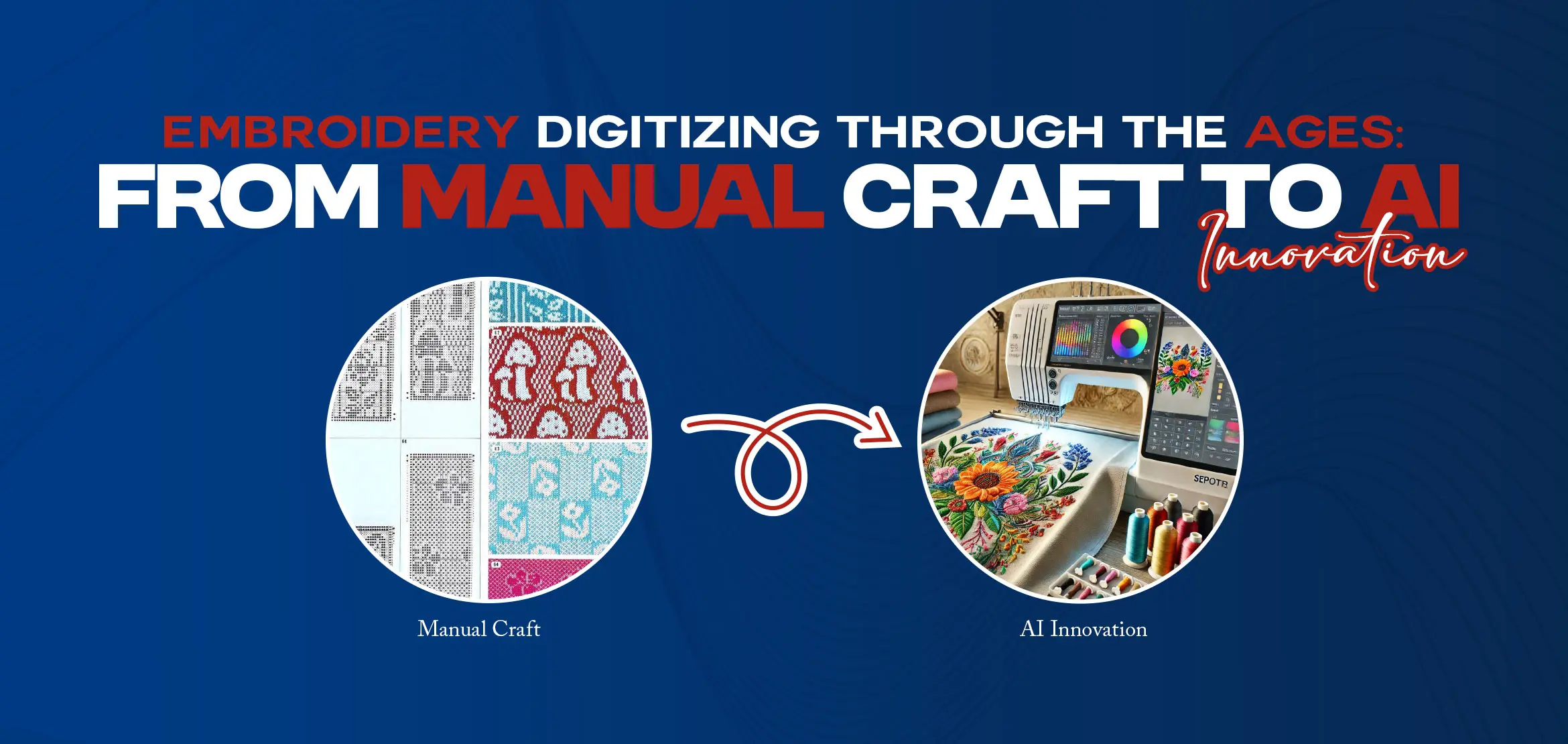
Embroidery Digitizing Through the Ages, from Manual Craft to AI Innovation
Imagine a world in which a colorful baseball cap patch is embroidered from a sketch on paper. That's the essence of embroidery digitizing. It all comes down to converting artwork into digital instructions that an embroidery machine can follow precisely. Digitizing is a combination of creativity and technology, whether you're a business owner branding your items or a hobbyist creating unique ideas. However, how did we get from manually stitched pieces to magic powered by AI? Let's learn the history of embroidery and its bright future by taking an exciting exploration through time.
Table Of Content
- A Look Back at Embroidery Digitizing History and Its Key Milestones
- The Role of Machines in the Early Days of Embroidery Digitizing
- The Blending of AI and Human Creativity in Embroidery Digitizing
- Comparing Manual vs AI Embroidery Digitizing
- How AI Embroidery Software is Revolutionizing the Digitizing Industry?
- Key Benefits of Using AI Embroidery Software Today
- Challenges in Embroidery Digitizing: Then and Now
- Top AI Embroidery Software Changing the Game in 2025
- Future Trends in Embroidery Digitizing: What to Expect from AI Innovation?
- Why is Digitizing USA Leading the Future of Embroidery Digitizing in the USA?
- Conclusion
A Look Back at Embroidery Digitizing History and Its Key Milestones
Embroidery is ancient, but is embroidery digitizing? That kicked off in the 1980s when computers started revolutionizing crafts. Early digitizers used punch cards, which were stacks of paper with holes punched in them to tell machines where to stitch. One mistake might ruin a whole design, and it was a difficult process. By the 1990s, software like Wilcom and Tajima’s DG/ML made things easier, letting users map out stitches on a screen. This was a game-changer for businesses creating logos or monograms.
By the 2000s, digitizing became more affordable, and small shops could jump in. According to the analysis from 2024, digitizing has added significantly to the worldwide embroidery market's current $3.2 billion worth. The history of embroidery digitizing shows our advancement from difficult punch cards to user-friendly software, and things are only going to get better.
The Role of Machines in the Early Days of Embroidery Digitizing
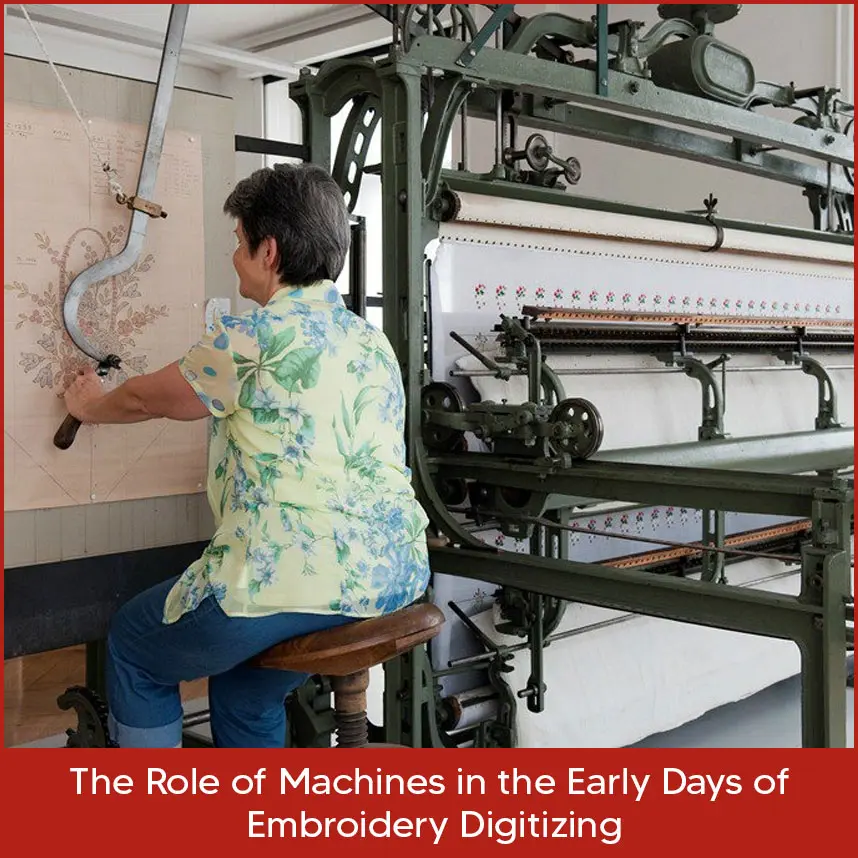
Back in the day, embroidery machines were digitization's hidden warriors. Brands like Brother and Janome rolled out computerized models in the 1980s that could read digital file formats. But creating those files was no walk in the park. Digitizers had to plot every single stitch by hand, tweaking settings for things like fabric stretch or thread thickness. A complex design, like a shaded rose, could take hours to digitize, and if the machine misreads the file? You’d end up with tangled threads and a major errors or production setbacks
These machines sparked the machine embroidery evolution, letting businesses produce consistent designs for things like team uniforms or gift shop trinkets. However, as orders increased, it was clear: digitizing needed to get faster and smarter. That’s where AI stepped in, ready to disturb the industry.
The Blending of AI and Human Creativity in Embroidery Digitizing
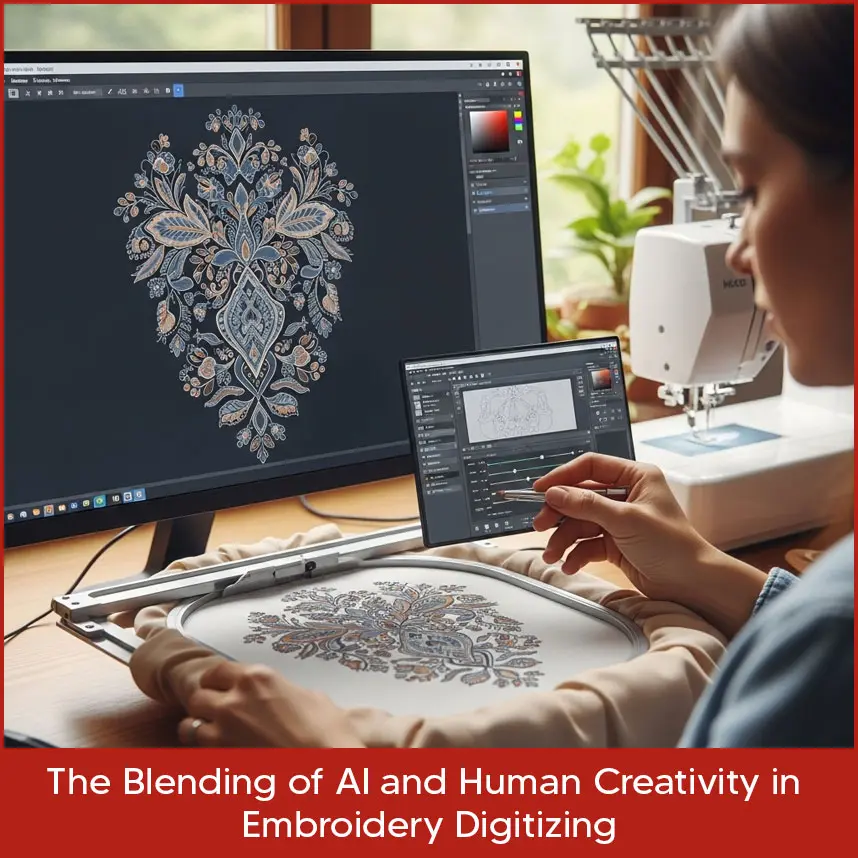
AI might sound like it’s all tech, but it’s really a partner to human creativity. AI embroidery software can scan a design, suggest stitch patterns, and even suggest how it’ll look on a hoodie or tote bag. But here’s the thing: it’s the human touch that brings it all together. A digitizer picks the colors that pop, adjusts the texture for that extra wow factor, and makes sure the design feels personal.
For example, AI might whip up a basic star pattern in seconds, but a skilled digitizer will add shading or a satin stitch to make it sparkle. This blend of tech and artistry is why today’s embroidered designs look so sharp, whether they’re on a wedding dress or a company jacket.
Comparing Manual vs AI Embroidery Digitizing
So, how do manual and AI digitizing stack up? Check out this table:
Manual digitizing is like baking a cake without an oven, profitable but slow. AI digitizing is like using a fancy mixer: it speeds things up without losing quality. For small businesses or hobbyists, AI means more time to focus on creating awesome designs instead of sweating the details.
How AI Embroidery Software is Revolutionizing the Digitizing Industry?

AI embroidery software is like a superhero sidekick for digitizers. Tools like Embrilliance and Hatch Embroidery use smart tech to handle tasks like adjusting stitch density or optimizing thread paths. According to a 2025 industry report, AI has boosted embroidery productivity by 35% since 2020. That’s huge for businesses racing to meet tight deadlines.
What’s neat is how AI makes digitizing accessible. Beginners can turn a sketch into a stitch file without years of practice, while professionals can tackle super detailed designs with ease. For instance, AI can preview how a logo will stitch on a curved surface like a cap, reducing production errors.
Key Benefits of Using AI Embroidery Software Today
Why follow the AI trend? Here’s the scoop:
High Speed Output: Designs that took hours now take minutes.
Cost Effective: Less labor means lower costs for you and your clients.
Accurate Results: AI keeps stitches smooth and consistent.
Easy to Use: Even newbies can create pro-level designs.
Creative Boost: AI suggests cool stitch types or color combos.
Imagine a small craft shop using AI to create custom tote bags for a local event. They save time, keep prices low, and still deliver top-notch quality, that’s the power of AI.
Challenges in Embroidery Digitizing: Then and Now
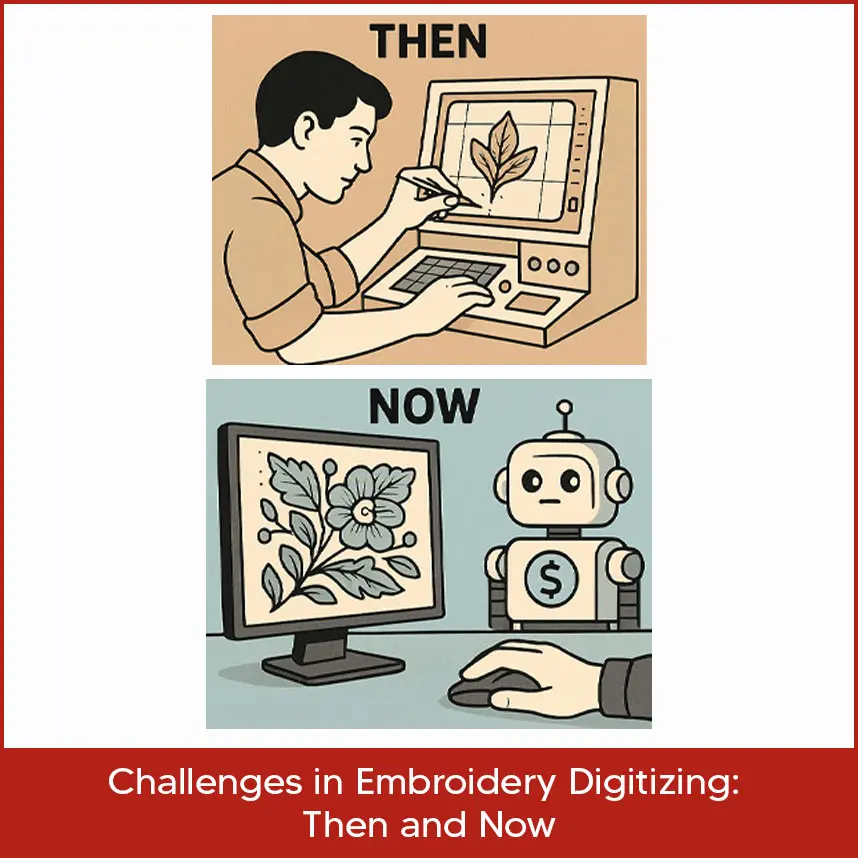
In the past, digitizing was all about time and skill. One wrong move, and you’d have to start over. Today’s challenges are different. AI software can cost a pretty penny upfront, and some programs struggle with ultra-detailed designs. There is also the worry that AI might make things too “cookie-cutter,” but as long as humans stay in the driver’s seat, creativity won’t take a backseat.
Top AI Embroidery Software Changing the Game in 2025
These four AI-powered software options are stealing the show in 2025:
Wilcom Hatch Embroidery: A top pick for its AI smarts. It auto-digitizes images into stitch files in minutes and optimizes stitch paths for fewer thread breaks. Its AI also shows 3D previews of designs on fabric, so you know exactly what you’re getting. Cloud-sharing makes teamwork easy.
Embrilliance Essentials: Perfect for beginners, this software’s AI auto-digitizes artwork and converts regular fonts into stitchable letters with its BX system. It also suggests thread colors based on popular brands, making design ready easy.
Brother PE-Design 11: A favorite for Brother machine users, its AI auto-generates stitches for complex patterns and previews designs in 3D on virtual fabrics. It adjusts stitch angles for different materials, ensuring a clean finish every time.
Bernina ArtLink 9: Free and easy to use, this software’s AI tweaks stitch paths and suggests color blends for polished results. For startups on limited resources, it's a perfect place to start.
Embroidery digitizing is now easier, faster, and more enjoyable due to these tools.
AI tools and AI features only assist you, they don’t provide you professional look like experts. AI can make mistakes that’s why we can’t rely on it, plus AI tools are so expensive and not always affordable. That’s why Digitizing USA is here for you. We provide custom embroidery digitizing services at affordable rates with unlimited revisions.
Future Trends in Embroidery Digitizing: What to Expect from AI Innovation?
The future looks bright. By 2027 experts predict AI will check fabrics in real time, tweaking stitches for tricky materials like leather or chiffon. We’ll also see tighter integration with online stores, letting customers upload designs and see instant previews. Plus, AI could cut thread waste, making digitizing more eco-friendly, a big win for sustainable brands.
Why is Digitizing USA Leading the Future of Embroidery Digitizing in the USA?
Digitizing USA is a leading business in the industry of embroidery digitizing. We have the accuracy and professional skills to deliver flawless designs for startups, retailers, and everyone in between. Our experts and skilled digitizers give your designs the look you want. So what are you waiting for? Contact us today and get custom embroidery digitizing services at affordable rates. No hidden charges, we provide unlimited revisions and fast turnaround. Do you need an embroidered logo on a polo or a bulk order of embroidered hats? Our fast turnaround and affordable prices make you a go-to choice. In 2025, Digitizing USA is driving industrial innovation and quality.
Conclusion
Embroidery digitizing has evolved from punch cards to AI-powered brilliance, and it’s an exciting time to jump in. Whether you’re crafting gifts or branding your business, AI embroidery software makes the process fast, affordable, and full of creative possibilities. From its roots in manual craftsmanship to today’s high-tech tools, digitizing keeps getting better. Want to create designs that turn heads? Reach out to Digitizing USA for top-tier digitizing services that bring your vision to life. Your next embroidered masterpiece is waiting.


